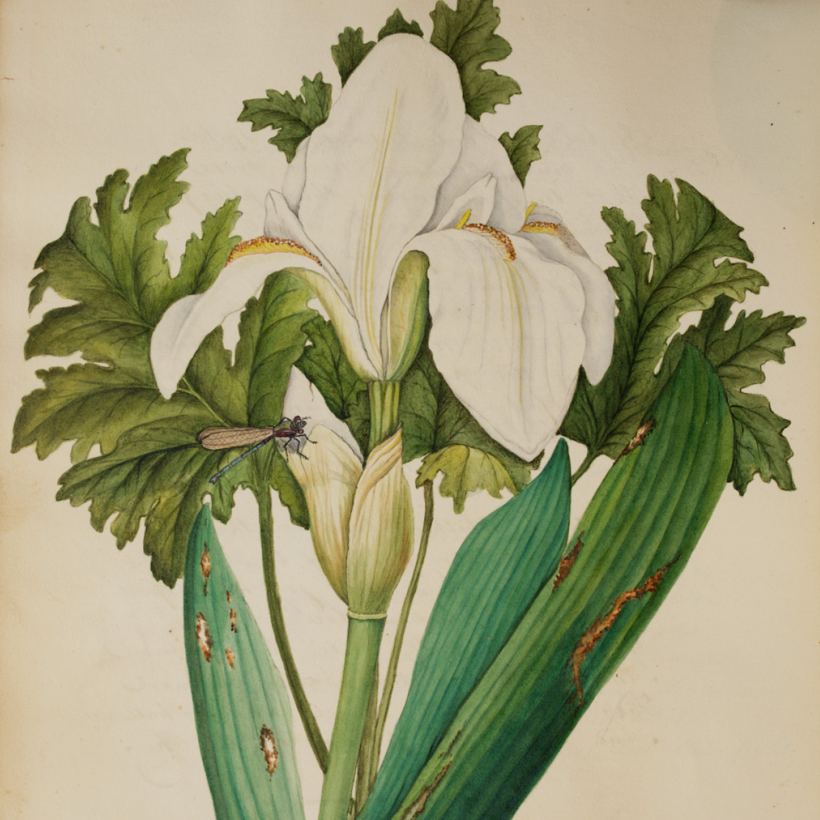When I first came across their names, I had no idea who the botanist Elizabeth Carrington Morris and entomologist Margaretta Hare Morris were. I was in the middle of writing a book about urban trees when I stumbled upon the sisters’ captivating letters in the collections of male scientists.
I might have continued researching trees if it weren’t for Margaretta’s words to a fellow entomologist in one of those letters. “I have panted for the sympathy of someone who could appreciate my love of the science, and overlook my want of that learned love derived from books that are, generally speaking, out of woman’s reach,” she wrote. “The book of nature, however, has been widely spread before me, and countless hours of inexpressible happiness I have had in the study, there.” After reading this, I wanted to know more about the Morris sisters.
Googling obscure 19th-century scientists from Philadelphia turned up very little information. I eventually discovered that Margaretta was one of the first women elected to both the American Association for the Advancement of Science and the Academy of Natural Sciences of Philadelphia. She engaged in public debates about major agricultural disasters, and her cicada discoveries brought her some scientific fame. Her older sister, Elizabeth, preferred to stay out of the spotlight, but she too was embedded in scientific circles, wrote popular articles, shared rare specimens, and illustrated articles and books.
The sisters were at the center of scientific culture, in conversation with Charles Darwin, Asa Gray, Louis Agassiz, and all the other major naturalists of the period. Even so, they had been erased.
“The book of nature … has been widely spread before me, and countless hours of inexpressible happiness I have had in the study, there.”
Over several years, I tracked down Elizabeth’s pseudonyms and Margaretta’s specimens. I combed through archives, herbaria, and the basements of natural-history museums. I found their paintings, poems, portraits, and publications. I tried to make sense of how they made decisions, fought injustices, and found joy outside their careers. Most of all, I was captivated by how they persisted when men discredited and dismissed them. The more I uncovered, the more it felt like I knew the Morris sisters, even though Margaretta remained somewhat mysterious, having left few personal details behind in her papers.
I have a habit of talking at length about whatever I’m researching. My poor friend who stood with me while our kids wiggled and twirled at a dance class patiently listened as I moaned about the difficulty of discerning the sisters’ adolescence through their poems. A family dinner was monopolized by my discovery that an arsonist had tried to burn down the Morris sisters’ barn and stable—twice! A woodworker building a tree house in our yard stopped sawing to hear me rhapsodize about finding a gossipy neighbor’s detailed diary entries about the sisters’ social lives.
This inability to simply make small talk proved to be a gift. Chatting with parents on a playground one autumn afternoon led to the jaw-dropping discovery that one of my child’s friends is a descendant of the Morris family. The luck of this was not lost on me: I live in Portland, Oregon, roughly 3,000 miles from Philadelphia and all the East Coast archives where I’d found remnants of the Morris sisters’ lives.
Even better, her great-uncle had one of Margaretta’s albums full of paintings and poetry in his attic. This treasure revealed Margaretta’s longings, losses—even her artistic talent.
After finishing my book Mischievous Creatures, I now know why I didn’t recognize Margaretta’s and Elizabeth’s names. They had been written out of history through countless small acts, from men naming a cicada Margaretta discovered after themselves to archivists naming collections of their papers after better-known scientists.
Hidden figures such as the Morris sisters will continue to be uncovered as researchers stumble onto unexpected paths. Whatever I research in the future, I will not hesitate to veer off-topic to explore something new, even if it means putting a beloved project aside. I certainly won’t stop chatting about my research with anyone willing to listen. Who knows what I’ll learn next.

Catherine McNeur is an environmental historian and associate professor at Portland State University. Her book Mischievous Creatures: The Forgotten Sisters Who Transformed Early American Science is out now from Basic Books


